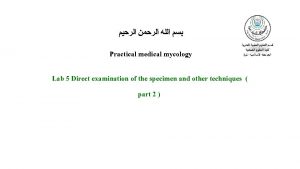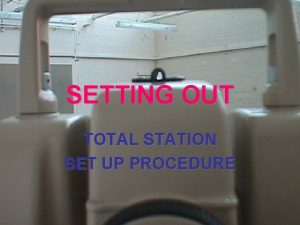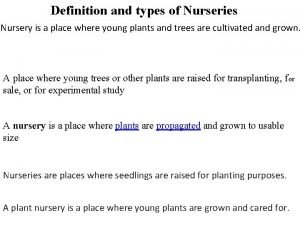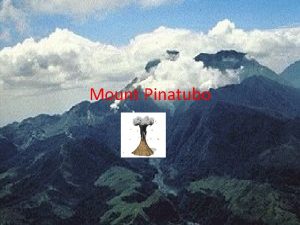Experiment No 9 i Preparation of temporary mount










- Slides: 10

Experiment No. 9 (i) Preparation of temporary mount of leaf epidermis to study the structure of stomata (i) Measurement of transpiration rate using Ganong’s potometer

Temporary mount of stomata Stomata • This is not the exact image. • The dark dots represent stomatal pore surrounded by two bean shaped guard cells. 1. Peel can be taken from either surface as Aloe vera is a monocot( equal distribution of stomata) 2. Place a drop of water on the epidermal peel kept on the slide and visualize under the microscope

Transverse section of leaf Structure of stomata Stomatal pore acts as a site for diffusion of gases in and out of leaf surface

Definitions • Transpiration is the process of water movement through a plant and its evaporation from aerial parts, such as from leaves but also from stems and flowers (termed as necessary evil as inevitable to the process of photosynthesis) • It occurs chiefly at the leaves while their stomata are open for the passage of CO 2 and O 2 during photosynthesis. • Basically of 3 types: i) Cuticular – Accounts for 10% of water loss through transpiration ii) Lenticular – Accounts for 1% water loss through transpiration iii) Stomatal - Accounts for 80 -90% water loss through transpiration q There is a difference in distribution of stomata in monocots and dicots. q Monocots(equal no. of stomata on both adaxial and abaxial surfaces) q Dicots(More no. of stomata on abaxial surface(lower).

Uses of Transpiration • Provides a cooling effect to the plant • Enables mass flow of nutrients and minerals along with water to shoots and leaves from roots

Factors affecting the rate of transpiration • • No. of leaves No. of stomata Temperature Humidity Intensity of sunlight Wind Water supply to the plant

Measurement of the rate of transpiration • Equipment used: Potometer(we would be using Ganong’s potometer) • A potometer( transpirometer) is a device used for measuring the rate of water uptake of a leafy shoot.

Points to remember… • Ganong’s potometer only measures the rate of water uptake , it cannot give an idea of actual transpiration rate • Alterations to light intensity, wind and humidity should be avoided • Immediately after the twig it cut, immerse it under water to prevent entry of air to xylem vessels • Twig may not be active for long time. • Correct sealing by wax should be done to avoid any leakage.

Calculations •

 Tease mount
Tease mount Ri temporary caregiver insurance
Ri temporary caregiver insurance Classification of theodolite
Classification of theodolite Temporary and permanent joints
Temporary and permanent joints Temporary stoppage of intestinal peristalsis
Temporary stoppage of intestinal peristalsis Kekurangan sediaan suspensi
Kekurangan sediaan suspensi Temporary setting
Temporary setting American legion temporary financial assistance
American legion temporary financial assistance Types of nursery
Types of nursery Temporary habits
Temporary habits Highlighting shampoo colors are prepared by combining
Highlighting shampoo colors are prepared by combining



















